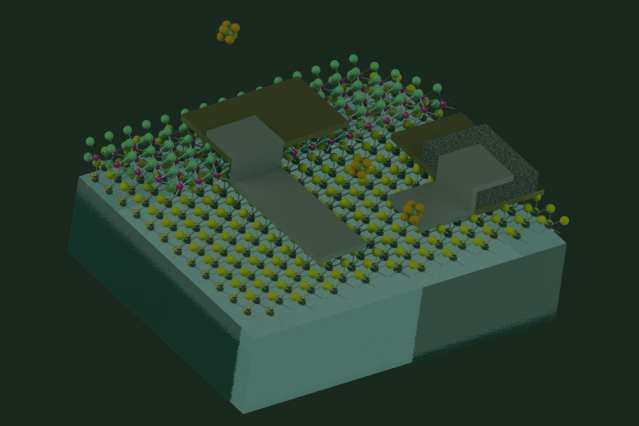Cartwheeling, acrobatic DNA nanorobots really are the future

DNA holds the key to some truly incredible breakthroughs, starting with some cartwheeling, acrobatic nanorobots made by a new breakthrough.
It seems DNA isn’t just the key to life, but also the means of a futuristic nanotechnology, if a new breakthrough by a team from Arizona State University is anything to go by.
For the past couple of years now, scientists have found a way to coax segments of DNA into performing a number of ‘tricks’, such as performing sophisticated mathematical computations.
But perhaps more impressive is that DNA has also been used to create robots thousands of times smaller than bacterium for a variety of uses both in the human body and in synthetic biology.
Until now, the process has been a rather slow affair, but the Arizona research team’s breakthrough is leaps and bounds ahead, quite literally.
Kung fu DNA
In a paper published to Nature Nanotechnology, the team said that it has developed an innovative DNA walker, capable of rapidly cartwheeling along a prepared track, covering ground 10 to 100 times faster than previous devices.
Part of the robot’s advantage over its competitors is due to its unusual technique of locomotion. Rather than simply stepping from one surface foothold to the next, the acrobatic walker moves head over heels in a cartwheel fashion, while remaining securely bound to at least one foothold at all times.
“The trick was to make the walker go head over heels, which is so much faster than the hopping used before – just as you would see in a kung fu action movie where the hero speeds up by cartwheeling to catch the villain,” said Nils G Walter of the research team.
Building the DNA structures, motors and circuits follows a similar process to how nature creates DNA with the four nucleotides (A,T,C and G) binding together in a particular order; Cs always pair with Gs and As always pair with Ts.
Bit of fine-tuning
Knowing this, it is possible to make DNA robots ‘walk’ from one strand via a foothold to another while carrying tiny cargo. Until now, this would have taken several minutes to move just a short distance and is actually slower than what nature can achieve.
To make the process faster, the team used a fluorescent imaging technique known as smFRET (single-molecule fluorescence resonance imaging transfer) to chart the DNA walker’s progress and evaluate its subtle kinetic properties.
By knowing this, it was just a matter of fine-tuning how it interacts with the strands to make it a more efficient mover.
While currently achieving a top speed of 43 foothold sites per minute, analysis suggests that the device can take hundreds of steps without dissociating.
Borrowing further insights from natural systems may allow dynamical DNA devices such as the walker to accelerate even more in the future by converting chemical energy into directed speed.
Source





